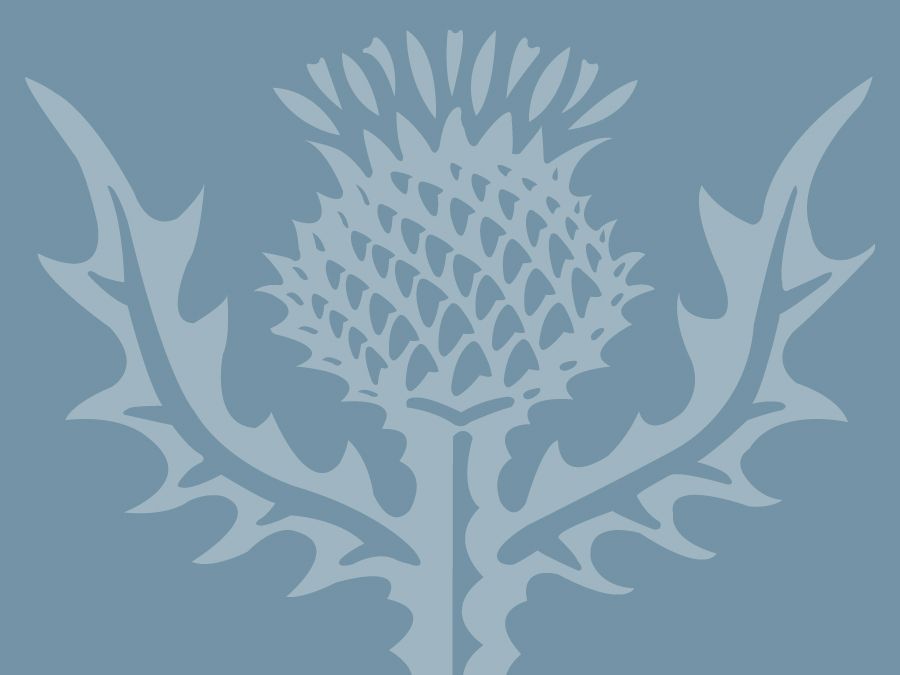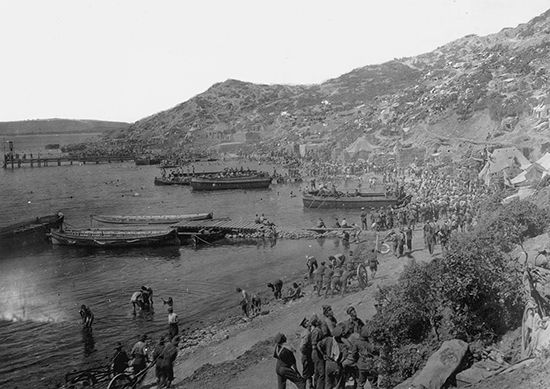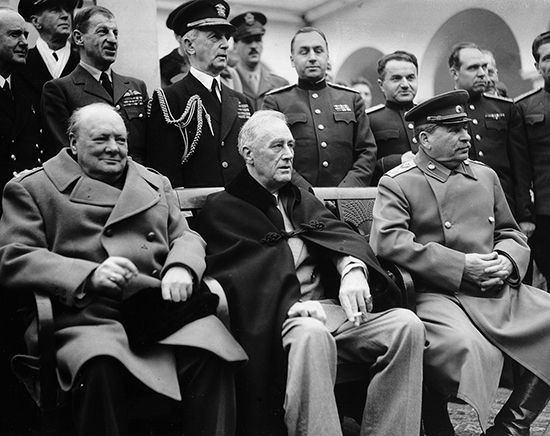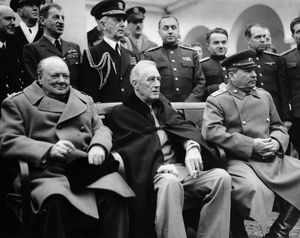Allied powers
- Also called:
- Allies
- Date:
- 1915 - 1918
- 1939 - 1945
Allied powers, those countries allied in opposition to the Central Powers (Germany, Austria-Hungary, and Turkey) in World War I or to the Axis powers (Germany, Italy, and Japan) in World War II.
The major Allied powers in World War I were Great Britain (and the British Empire), France, and the Russian Empire, formally linked by the Treaty of London of September 5, 1914. Other countries that had been, or came to be, allied by treaty to one or more of those powers were also called Allies: Portugal and Japan by treaty with Britain; Italy by the Treaty of London of April 26, 1915, with all three powers. Other countries—including the United States after its entry on April 6, 1917—that were arrayed against the Central Powers were called “Associated Powers,” not Allied powers; U.S. Pres. Woodrow Wilson emphasized that distinction to preserve America’s free hand. The Treaty of Versailles (June 28, 1919) concluding the war listed 27 “Allied and Associated Powers”: Belgium, Bolivia, Brazil, the British Empire, China, Cuba, Czechoslovakia, Ecuador, France, Greece, Guatemala, Haiti, the Hejaz, Honduras, Italy, Japan, Liberia, Nicaragua, Panama, Peru, Poland, Portugal, Romania, Serb-Croat-Slovene State, Siam, the United States, and Uruguay.
In World War II the chief Allied powers were Great Britain, France (except during the German occupation, 1940–44), the Soviet Union (after its entry in June 1941), the United States (after its entry on December 8, 1941), and China. More generally, the Allies included all the wartime members of the United Nations, the signatories to the Declaration of the United Nations. The original signers of January 1, 1942, were Australia, Belgium, Canada, China, Costa Rica, Cuba, Czechoslovakia, the Dominican Republic, El Salvador, Greece, Guatemala, Haiti, Honduras, India, Luxembourg, the Netherlands, New Zealand, Nicaragua, Norway, Panama, Poland, South Africa, the Soviet Union, the United Kingdom, the United States, and Yugoslavia. Subsequent wartime signers were (in chronological order) Mexico, the Philippines, Ethiopia, Iraq, Brazil, Bolivia, Iran, Colombia, Liberia, France, Ecuador, Peru, Chile, Paraguay, Venezuela, Uruguay, Turkey, Egypt, Syria, and Lebanon.



















